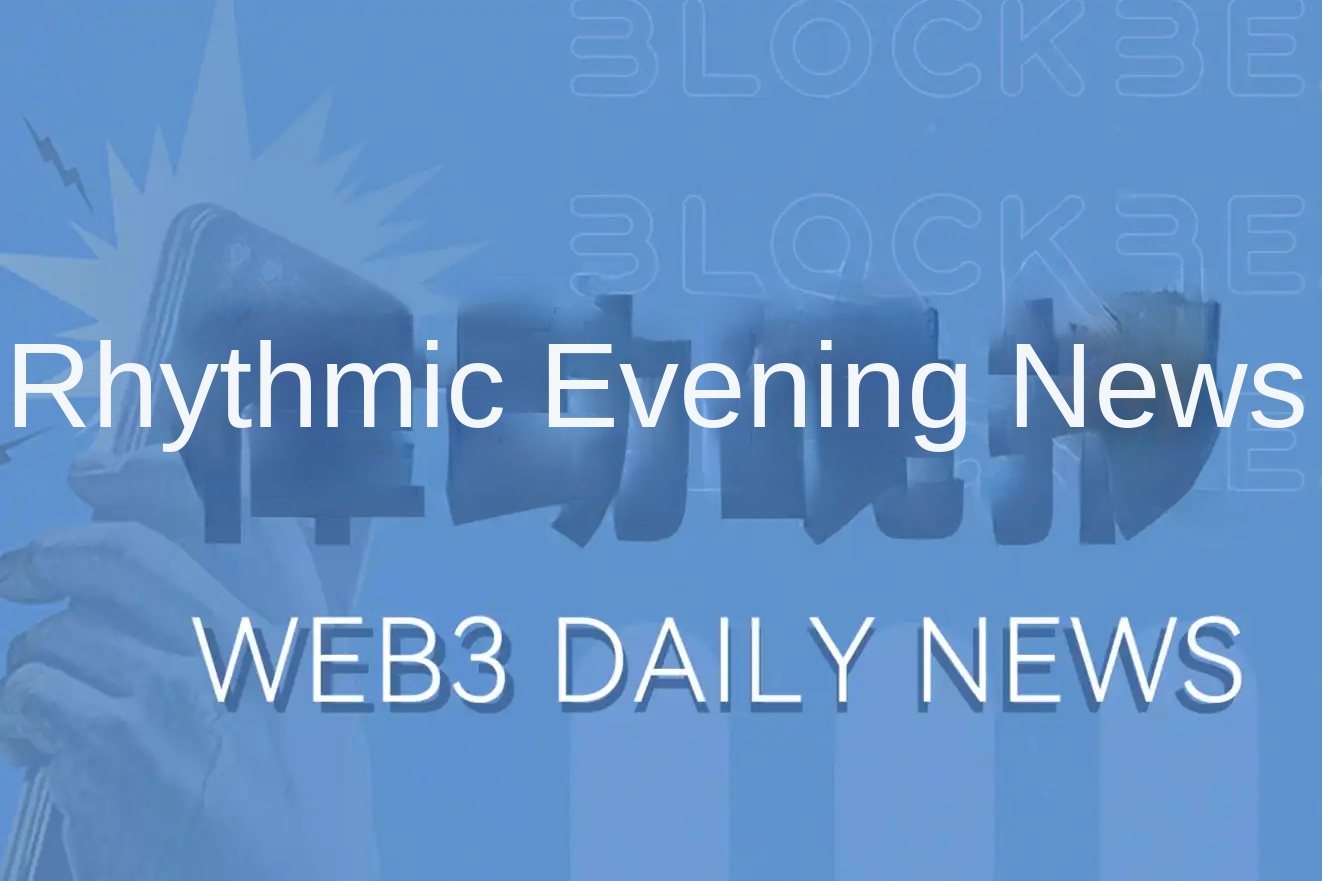Vitalik's New Article: Beyond Prediction Markets, Polymarket Could Reshape Information Finance
Original Article Title: From Prediction Markets to Info Finance
Original Article Author: Vitalik Buterin
Original Article Translation: 0xjs, Golden Finance
One of the most exciting Ethereum applications for me is prediction markets. In 2014, I wrote an article about futarchy, a prediction-based governance model envisioned by Robin Hanson. As early as 2015, I was an active user and supporter of Augur (look, my name is in the Wikipedia article). I made $58,000 on the 2020 election bet. This year, I have been a close supporter and follower of Polymarket.
For many, prediction markets are just betting on elections, and betting on elections is gambling—if it can bring enjoyment to people, that's great, but fundamentally, it's no more interesting than buying random tokens on pump.fun. From this perspective, my interest in prediction markets may seem confusing. Therefore, in this article, I aim to explain the reasons why this concept excites me. In short, I believe that (i) even existing prediction markets are a very useful tool for the world, but also (ii) prediction markets are just an example of a larger, very powerful category that has the potential to create better implementations in social media, science, news, governance, and other fields. I will refer to this category as "info finance."
Polymarket's Dual Nature: A Betting Site for Participants, a News Site for Everyone Else
Polymarket has been a very effective source of information about the U.S. election in the past week. Polymarket not only predicted a 60/40 chance of Trump winning (while other sources predicted 50/50, which is not very impressive in itself), but it also demonstrated other advantages: when the results came out, despite many experts and news sources constantly enticing the audience, hoping they would hear favorable news about Harris, Polymarket directly revealed the truth: Trump's chances of winning were over 95%, with a greater than 90% chance of taking control of all government branches.


Both screenshots were taken at 3:40 AM Eastern Time on November 6th.
But for me, this isn't even the most interesting example of Polymarket. So let's look at another example: the July elections in Venezuela. On the day after the election, I remember seeing someone out of the corner of my eye protesting the highly manipulated election result in Venezuela. At first, I didn't pay much attention. I knew Maduro was already one of those "basically a dictator" figures, so I thought, of course, he would rig every election result to hold onto power, of course, there would be protests, of course, the protests would fail—unfortunately, many others did indeed fail. But then as I scrolled through Polymarket, I saw this:

People were willing to put in over a hundred thousand dollars to bet on a 23% chance of Maduro being overthrown in this election. Now I was paying attention.
Of course, we know the unfortunate outcome of this situation. In the end, Maduro did indeed stay in power. However, the market made me realize that this time, the attempt to overthrow Maduro was serious. The scale of the protests was massive, and the opposition executed a surprisingly well-performed strategy, proving to the world how fraudulent the election was. If I hadn't received that initial signal from Polymarket that "this time, something is worth paying attention to," I wouldn't have even started paying attention.
You should never fully trust Polymarket's betting charts: if everyone believes the betting charts, then anyone with money can manipulate the betting charts, and no one dares to bet against them. On the other hand, fully trusting the news is also a bad idea. The news has sensationalist motives, exaggerating the consequences of anything for clicks. Sometimes, this is justified, and other times, it is not. If you see an article that seems sensationalist, but then you go to the market and find that the probability of the related event hasn't changed at all, then skepticism is warranted. Or if you see unexpectedly high or low probabilities in the market, or unexpected sudden changes, that's a signal for you to read through the news to see what caused it. Conclusion: Reading news and betting charts together gives you more information than reading either one alone.
Let's recap what's going on here. If you're a gambler, you can bet on Polymarket, where it's a betting site for you. If you're not a gambler, you can read the betting charts, where it's a news site for you. You should never fully trust the betting charts, but I've personally incorporated reading the betting charts as one step in my information-gathering process (alongside traditional media and social media), which helps me effectively gather more information.
Information Finance in a Broader Sense
Now, we get to the important part: predicting election results was just the introductory application. The broader concept is that you can use finance as a way to coordinate incentive mechanisms to provide valuable information to an audience. Now, a natural response is: isn't all finance fundamentally about information? Different participants make different trade-off decisions because they have different views on what the future holds (besides individual needs such as risk appetite and hedging desires). You can infer a lot about the world by reading market prices.
For me, information finance is like this, but in a structurally correct way. Similar to the concept of structural correctness in software engineering, information finance is a discipline that requires you to (i) start from the facts you want to know and then (ii) deliberately design a market to extract that information in the best possible way from market participants.

Information finance is a three-sided market: forecasters make predictions, readers consume the predictions. The market outputs forecasts about the future as a public good (as that is what it was designed for).
A prediction market is one example: you want to know a specific fact about the future, so you set up a market for people to bet on that fact. Another example is a decision market: you want to know, based on some metric M, which decision between Decision A and Decision B will yield a better outcome. To achieve this, you set up a conditional market: asking people to bet on (i) which decision will be chosen, (ii) if Decision A is chosen, the value of M is received, otherwise zero, (iii) if Decision B is chosen, the value of M is received, otherwise zero. With these three variables, you can determine whether the market perceives Decision A or Decision B to be more favorable to receive a value of M.

I anticipate that a technology that will drive the development of information finance in the next decade is AI (whether big models or future tech). This is because many of the most interesting applications of information finance deal with "micro" problems: millions of small-scale markets where decisions individually have a relatively small impact. In fact, low-volume markets often cannot function efficiently: for experienced participants, taking the time to do in-depth analysis for a few hundred dollars of profit doesn't make sense, and many people even believe that without subsidies, such markets cannot function at all because there aren't enough naive traders, apart from the grandest and most sensational issues, for experienced traders to profit from. AI completely changes this equation, meaning that even in a $10-volume market, we can potentially obtain high-quality information. Even if subsidies are needed, the subsidy amounts for each problem become very affordable.
Information Finance Requires Human Distillation
Judgment
Imagine you have a trustworthy human judgment mechanism that has community-wide legitimacy, but making judgments with it takes a long time and is costly. However, you want low-cost real-time access to at least one approximate copy of this "expensive mechanism." Here is an idea from Robin Hanson on what you could do: every time you need to make a decision, you create a prediction market that forecasts what outcome the expensive mechanism would produce if called upon to make the decision. You run the prediction market and put in a small amount of money to subsidize market makers.
99.99% of the time, you don't actually call the expensive mechanism: maybe you "abort the transaction" and refund everyone's contributions, or you just give everyone zero, or you see if the average price is closer to 0 or 1 and take that as ground truth. 0.01% of the time – perhaps randomly, perhaps aimed at the market with the most volume, perhaps a mix of both – you actually run the expensive mechanism and compensate participants accordingly.
This gives you a trustworthy, neutral, fast, and cheap "distilled version" that is analogous to the highly trusted but costly mechanism you started with (using "distilled" akin to "distilled" in LLM). Over time, this distilled mechanism roughly mirrors the behavior of the original mechanism – as only participants who help achieve that outcome make money, and others lose money.

Possible prediction market + community note combination model.
This applies not only to social media but also to DAOs. A major issue with DAOs is the sheer number of decisions, leaving most people unwilling to participate, leading to either widespread use of delegation, with the risk of centralization and delegation failure common in representative democracies, or susceptibility to attacks. If actual voting in a DAO happens infrequently, with most things being decided by prediction markets where humans and AI combine to predict the vote outcome, such a DAO might function well.
As seen in the decision market example, information finance holds many potential paths to solving key issues in decentralized governance, with the key lying in the balance between market and non-market components: the market is the "engine," while some non-financial trust mechanisms act as the "steering wheel."
Other Use Cases of Information Finance
Personal tokens—projects like Bitclout (now deso), friend.tech, and many others aiming to create tokens for individuals and make them easily tradable—are a class of what I call "primitive information finance." They intentionally create a market price for a specific variable (i.e., the expected future reputation of a person), but the exact information revealed by the price is too blurry and subject to reflexivity and bubble dynamics. There is potential to create improved versions of such protocols and address critical issues like talent discovery by more thoughtfully considering the tokenomics (especially where their ultimate value comes from). Robin Hanson's reputation futures concept is a possible end state here.
Advertisement — The ultimate "expensive but reliable signal" is whether you will buy the product. Based on this signal, Information Markets can help people determine what to buy.
Scientific Peer Review — There has long been a "reproducibility crisis" in the scientific community, where certain prominent results have become part of folklore but ultimately cannot be reproduced in new studies. We can attempt to identify results that need reexamination through prediction markets. Before reexamination, such markets also allow readers to quickly estimate how much they should trust any particular result. Experiments of this idea have been conducted and have seemed successful so far.
Public Goods Funding — One of the main issues with the public goods funding mechanism used by Ethereum is its "popularity contest" nature. Every contributor needs to market themselves on social media to gain recognition, making it difficult for those who lack the ability to do so or naturally have more of a "background" role to receive substantial funds. An attractive solution is to attempt to track the entire dependency graph: for each positive result, which projects contributed how much to it, and then for each project, which projects contributed how much to it, and so on. The main challenge of this design is to find edge weights that make it resistant to manipulation. After all, such manipulation has been happening. A distilled human judgment mechanism may be helpful.
Conclusion
These ideas have been theorized for a long time: the earliest works on prediction markets or even decision markets are decades old, and similar discourses in financial theory are even older. However, I believe that the current decade offers a unique opportunity for the following main reasons:
Information Markets address the trust problem that people actually have. A common concern of this era is a lack of knowledge (worse, a lack of consensus) on who to trust in political, scientific, and business contexts. Information Market applications can help be part of the solution.
We now have a scalable blockchain as a foundation. Until recently, the fees were still too high to truly realize these ideas. Now, they are no longer prohibitively high.
AI as a participant. When Information Markets have to rely on human participation for every issue, they are relatively ineffective. AI has greatly improved this situation, enabling effective markets even on a small scale. Many markets may have a combination of AI and human participants, especially when the number of specific issues suddenly goes from small to large.
To fully seize this opportunity, we should move beyond just predicting elections and explore what else Information Markets can bring us.
Special thanks to Robin Hanson and Alex Tabarrok for their feedback and comments
Welcome to join the official BlockBeats community:
Telegram Subscription Group: https://t.me/theblockbeats
Telegram Discussion Group: https://t.me/BlockBeats_App
Official Twitter Account: https://twitter.com/BlockBeatsAsia


 Forum
Forum Finance
Finance
 Specials
Specials
 On-chain Eco
On-chain Eco
 Entry
Entry
 Podcasts
Podcasts
 Activities
Activities
 OPRR
OPRR








